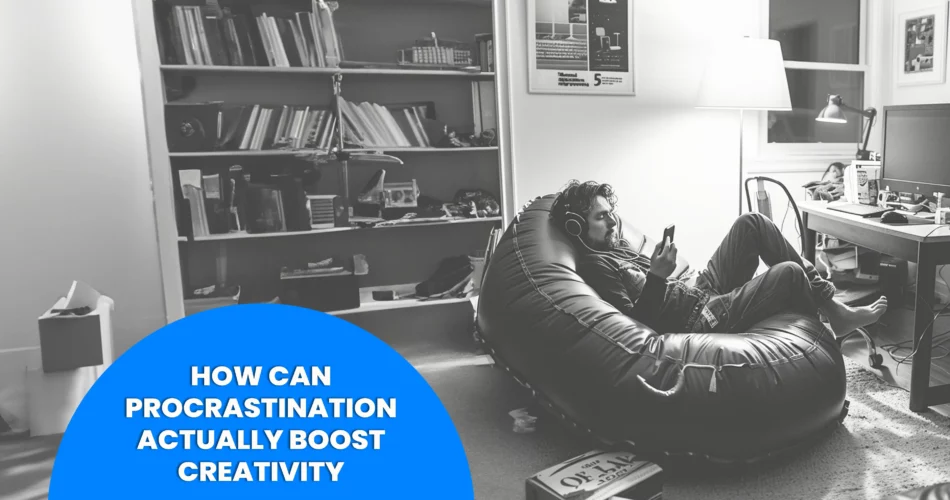Procrastination is often seen as a negative habit that hinders productivity and success. However, recent scientific research suggests that procrastination may have unexpected benefits for creativity. In this article, we’ll explore the surprising link between procrastination and creative thinking, and how you can harness this knowledge to boost your own creativity.
The Science of Procrastination and Creativity
1. The Default Mode Network
– Procrastination activates the brain’s Default Mode Network (DMN)
– The DMN is associated with mind-wandering, daydreaming, and creative thinking
– When the DMN is active, the brain makes new connections and generates novel ideas
2. The Incubation Effect
– Procrastination can lead to an “incubation period” for creative ideas
– Stepping away from a problem allows the subconscious mind to work on it
– This can lead to “Aha!” moments and creative breakthroughs
3. Divergent Thinking
– Procrastination may promote divergent thinking, a key component of creativity
– Divergent thinking involves generating multiple, unique ideas
– Procrastinators often explore a wider range of possibilities before settling on a solution
4. Reduced Cognitive Fixation
– Procrastination can help break cognitive fixation, the tendency to get stuck on one idea
– By delaying work, procrastinators may approach problems with a fresh perspective
– This can lead to more original and innovative solutions
The Pros and Cons of Procrastination
1. Potential Benefits
– Increased creativity and problem-solving abilities
– More time for ideas to incubate and develop
– Reduced stress and pressure can lead to better decision-making
2. Potential Drawbacks
– Missed deadlines and increased stress when time runs short
– Decreased productivity and efficiency
– Strained relationships with colleagues or supervisors
How to Harness Procrastination for Creativity:
1. Set Realistic Deadlines
– Give yourself enough time for creative ideas to incubate
– Avoid setting deadlines so tight that they induce excessive stress
– Use deadlines as a motivational tool, not a source of anxiety
2. Engage in Structured Procrastination
– Use procrastination time to work on other, less daunting tasks
– This keeps you productive while allowing creative ideas to percolate
– Prioritize tasks based on their importance and urgency
3. Create a Conducive Environment
– Ensure your workspace is comfortable and free of distractions
– Surround yourself with inspiring materials, such as books, art, or nature
– Take regular breaks to allow your mind to wander and recharge
4. Embrace Mind-Wandering
– Give yourself permission to daydream and let your mind explore
– Engage in activities that promote mind-wandering, such as walking or doodling
– Keep a notebook nearby to capture any creative ideas that arise
5. Know When to Stop
– Recognize when procrastination becomes counterproductive
– Set a firm deadline for when you must start working on the task at hand
– Use techniques like the Pomodoro method to maintain focus and productivity
Real-World Examples:
1. Leonardo da Vinci
– Famous for his prolific procrastination and unfinished works
– Used procrastination time to study, experiment, and generate new ideas
– His procrastination led to groundbreaking innovations in art and science
2. Albert Einstein
– Known for his “absent-minded professor” persona and tendency to procrastinate
– Used procrastination to let his mind wander and explore abstract concepts
– His procrastination contributed to his revolutionary theories in physics
3. Steve Jobs
– Notorious for his perfectionism and tendency to delay product launches
– Used procrastination to refine and improve upon his ideas
– His procrastination led to the development of iconic products like the iPhone and iPad
Conclusion
While procrastination is often viewed as a negative habit, the science behind it suggests that it can have surprising benefits for creativity. By understanding the link between procrastination and creative thinking, you can learn to harness this knowledge to boost your own creativity. Remember to set realistic deadlines, engage in structured procrastination, create a conducive environment, embrace mind-wandering, and know when to stop. By following these tips and looking to real-world examples like Leonardo da Vinci, Albert Einstein, and Steve Jobs, you can unlock the creative potential of procrastination and achieve new levels of innovation and success.
FAQs:
1. Is procrastination always good for creativity?
No, procrastination is not always good for creativity. While it can have some benefits, such as allowing time for ideas to incubate, it can also lead to missed deadlines, increased stress, and reduced productivity. It’s essential to find a balance and know when to stop procrastinating and start working.
2. Can anyone benefit from procrastination, or is it only helpful for certain people?
Anyone can potentially benefit from the creative benefits of procrastination, but it may be more helpful for some people than others. Those who are naturally creative or work in fields that require innovation may find procrastination particularly useful. However, it’s important to remember that everyone is different, and what works for one person may not work for another.
3. How can I tell the difference between productive procrastination and harmful procrastination?
Productive procrastination is when you use your procrastination time to work on other, less daunting tasks or engage in activities that promote creative thinking. Harmful procrastination is when you avoid work entirely and engage in unproductive activities that don’t contribute to your goals. If your procrastination is causing you to miss deadlines, feel stressed, or strain relationships, it may be harmful.
4. Can I train myself to be a better procrastinator?
While you can’t necessarily train yourself to be a better procrastinator, you can learn to harness the creative benefits of procrastination. This involves setting realistic deadlines, engaging in structured procrastination, creating a conducive environment, embracing mind-wandering, and knowing when to stop. By practicing these techniques, you can learn to use procrastination to your advantage.
5. Are there any long-term negative effects of using procrastination for creativity?
If procrastination is used in moderation and balanced with productive work, there are unlikely to be any long-term negative effects. However, if procrastination becomes a chronic habit and leads to missed deadlines, poor performance, or strained relationships, it can have negative consequences. It’s essential to find a balance and use procrastination as a tool for creativity, not an excuse to avoid work.
By understanding the science behind procrastination and creativity, and learning how to harness it effectively, you can unlock new levels of innovation and success. Remember to use procrastination in moderation, find a balance that works for you, and always strive to meet your deadlines and goals. With the right approach, procrastination can be a surprising ally in your quest for creative excellence.



